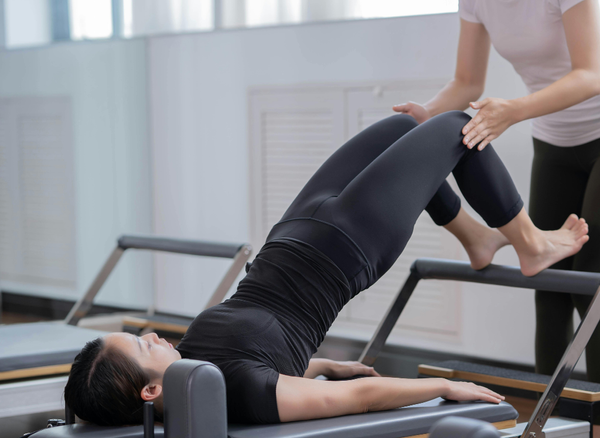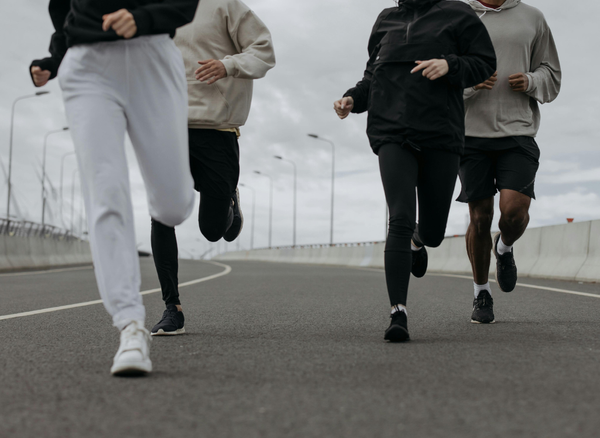Dead hangs might sound like something out of a horror movie, but they’re actually a fantastic exercise for building upper body strength. Imagine hanging from a pull-up bar like a sloth on a lazy day. That’s essentially what dead hangs are all about.
This exercise is as simple as it gets: grab a secure overhead bar, let your body weight do its thing, and hang there with your arms straight. But don’t be fooled by its simplicity; dead hangs pack a punch when it comes to benefits.
What are dead hangs good for?
Performing dead hangs can significantly improve your grip strength, which is crucial for various exercises like pull-ups and chin-ups. If you’ve ever struggled to open jars, dead hangs might just be your new best friend. They also help in enhancing shoulder stability and mobility, making them a great addition to your strength training routine. Plus, they’re excellent for posture correction, especially if you spend a lot of time sitting.
What muscles do dead hangs work?
Dead hangs work multiple muscles in your upper body. Your shoulder muscles, including the rotator cuff muscles, get a good workout. The exercise also engages your core muscles, helping to improve core stability. Your forearm strength will see significant gains, and your shoulder blades will thank you for the improved mobility. It’s like a full-body workout without the need for any fancy equipment.
Proper Technique
To perform a dead hang, find a secure overhead bar:
- Grab a bar with an overhand grip, palms facing away from you
- Your hands should be shoulder-width apart
- Keep your arms fully extended and your body straight
- Let your body hang
Make sure to keep your shoulder blades engaged to avoid shoulder pain. Hold this position for as long as you can, aiming to gradually increase your dead hang time.
Modifying Dead Hangs
If you’re new to dead hangs, you might find it challenging to hang for an extended period. No worries! You can modify dead hangs by using an assisted pull-up machine or by performing active hangs, where you slightly bend your elbows. You can also try a mixed grip, with one palm facing you and the other facing away, to add variety and target different muscle groups.
Dead Hangs vs. Other Exercises
Dead hangs are often compared to other exercises like pull-ups and chin-ups. While pull-ups and chin-ups are great for building upper body muscles, dead hangs focus more on grip strength and shoulder stability. They’re also less intense, making them suitable for beginners. Think of dead hangs as the foundation upon which you can build more complex exercises.
Common Mistakes
One common mistake people make when performing dead hangs is not keeping their body straight. It’s essential to maintain a straight line from your head to your toes to engage the entire body. Another mistake is using a grip that’s too wide or too narrow. Your hands should be shoulder-width apart to ensure proper technique and avoid injury.
Shoulder Health
Dead hangs are excellent for improving shoulder health. They help in decompressing the shoulder joints, which can be beneficial if you have decreased mobility or shoulder pain. Regular dead hangs can also prevent injuries by strengthening the stabiliser muscles around your shoulders. It’s like giving your shoulders a much-needed vacation from the stress of daily activities.
Core Strength
While dead hangs primarily target the upper body, they also engage your core muscles. Keeping your body straight during the exercise requires core stability, which can help in improving overall muscular endurance. It’s like getting a two-for-one deal at the gym: upper body strength and a stronger core in one exercise.
Spinal Health
Hanging from a bar helps in decompressing the spine, which can be particularly useful if you suffer from back pain due to prolonged sitting. It’s like giving your spine a gentle stretch, helping to alleviate tension and improve overall spinal health.
Improved Posture
If you’re looking to improve your posture, dead hangs can be a game-changer. The exercise helps in aligning your shoulder blades and strengthening the muscles that support good posture. It’s like having a personal trainer constantly reminding you to stand up straight, but without the nagging.
Everyday Activity
Whether it’s opening jars, carrying groceries, or lifting heavy objects, you’ll find these tasks less challenging. It’s like having a secret weapon in your daily life, making you more efficient and less prone to injuries.
Dead Hang FAQs
How long to dead hang?
Start with 10-20 seconds and gradually increase your dead hang time as your grip strength improves. Aim for at least 1-2 minutes for optimal benefits.
Can dead hangs help with shoulder pain?
Yes, dead hangs can help alleviate shoulder pain by decompressing the shoulder joints and strengthening the stabiliser muscles around the shoulders.
Are dead hangs suitable for beginners?
Absolutely! Dead hangs are a great exercise for beginners. You can modify them using an assisted pull-up machine or by performing active hangs to build up your strength gradually.
Do dead hangs make you taller?
There is no scientific evidence to support the claim that dead hangs can make you taller. However, regularly performing them may help improve your posture, which can give the illusion of being taller. So while they won't physically increase your height, they can still contribute to a taller appearance.
What do dead hangs work?
Dead hangs work multiple muscles in your upper body, including the shoulders, core, and forearms. They also help improve grip strength and shoulder stability. Additionally, they can benefit spinal health and posture.
Do dead hangs build muscle?
Dead hangs primarily focus on grip strength and shoulder stability, but they can also engage muscles in the upper body and core. While they may not be as effective at building muscle compared to exercises like pull-ups or chin-ups, dead hangs can still contribute to muscle growth when combined with a comprehensive workout routine.
How long should i be able to dead hang?
As with any exercise, the duration of a dead hang will vary depending on your fitness level and strength. It's essential to start slow and gradually increase your time as you build up the necessary grip strength and core stability. Aim for at least 1-2 minutes for optimal benefits, but don't push yourself beyond your limits. Listen to your body and stop if you feel any pain or discomfort. Remember, proper form is more important than duration!
Summary
Dead hangs are a simple yet effective exercise for improving upper body strength, grip strength, and overall muscular endurance. They target multiple muscles, including the shoulder muscles, core muscles, and forearm strength. Regular dead hangs can enhance shoulder stability, posture correction, and spinal health. Whether you’re a beginner or an experienced athlete, incorporating dead hangs into your routine can offer numerous health benefits.
Keep hanging strong! 💪







